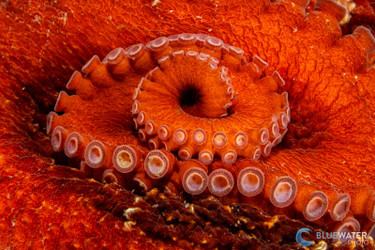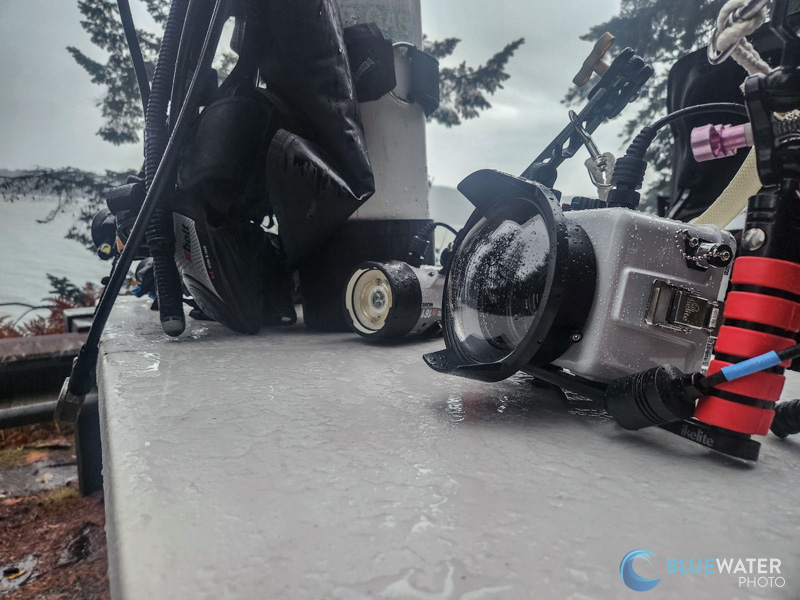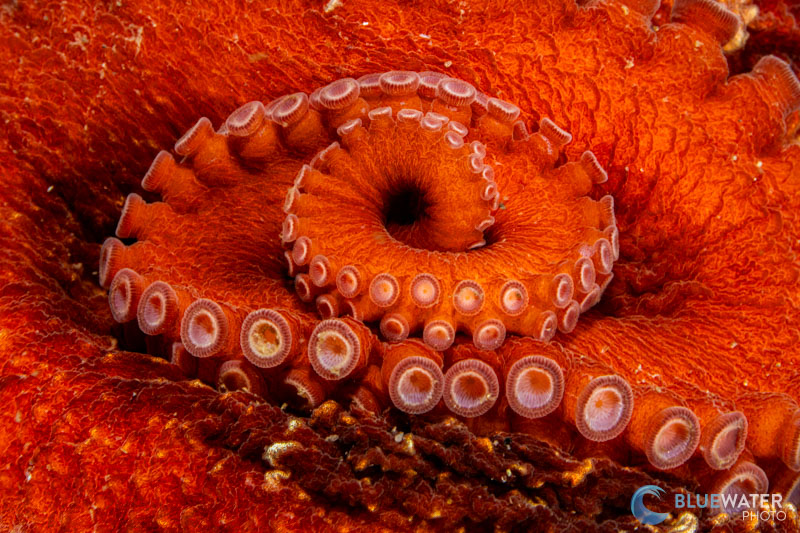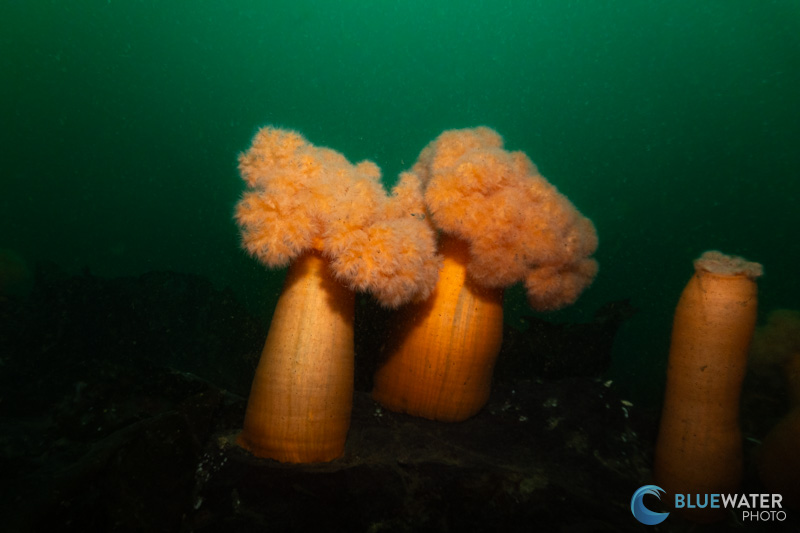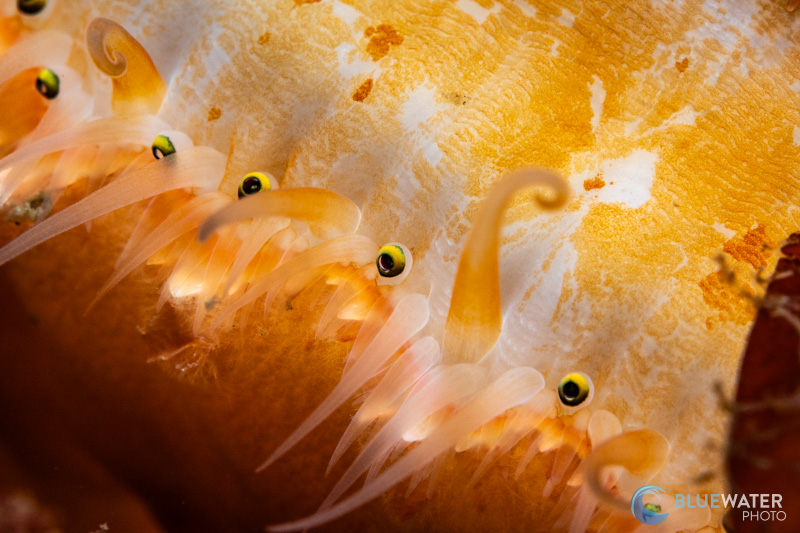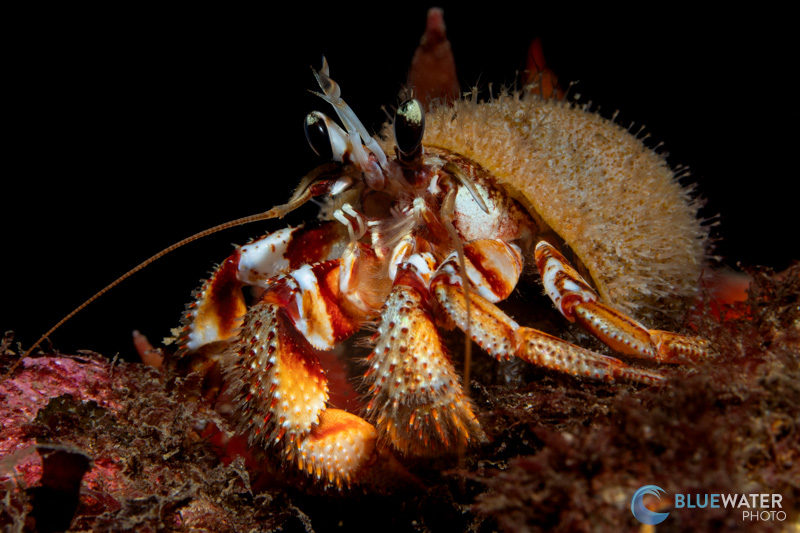Sony A6700 Review
Posted by Nirupam Nigam on June 28th, 2024

Sony has reinvigorated the APS-C camera market with the release of the Sony A6700 in 2023. With a higher resolution sensor, featuring a 26 megapixel sensor -the Sony A6700 is a major upgrade to the Sony crop sensor line. At only $1399 for the body, it features many of the same incredible new AI features announced in the Sony A7R V and Sony ZV-E1 - including an AI autofocus processor. This means autofocus tracking that is much more accurate and sticky than previous Sony APS-C models. The A6700 can also record 6K oversampled 4K/60, 10-bit 4:2:2 - making it an ideal camera for underwater video shooters.
We were very excited to be the first to take the Sony A6700 underwater. Unfortunately, fate was cruel, and the day after receiving the equipment for testing, the Pacific Northwest received record rainfalls. But not letting this hold us back, we donned our dive gear and headed in to the murky waters and give the new Sony A6700 a true underwater test.
"Please keep in mind that the dark green water was a result of rain runoff and the dives were close to night diving conditions due to limited visibility and a lack of sun. With each photo in this review, I am sharing my "triangle of exposure" settings so that you can see what the photos look like at ISO 1000, and how well the stabilization works at 1/8th of a second. Overall the results are extremely impressive and the A6700 is just plain fun to shoot!"
The incredible AI animal eye autofocus tracking capability of the A6700 made it a breeze to lock onto the eye of this scalyhead sculpin. 1/125, f/14, ISO 250
An octopus tentacle photographed with the Sony A6700, Sony 90mm macro lens, Ikelite A6700 housing, and dual Ikelite DS230 strobes. 1/125, f/20, ISO 250
Sony A6700 Specifications
- 26 megapixel APS-C CMOS sensor
- Bionz XR processor with a dedicated AI processor
- No built-in flash
- 1/160 flash sync speed
- 5 axis in-body image stabilization
- Low light autofocus sensitivity: -3 EV
- Animal eye autofocus tracking as well as human, bird, insect, car, train, airplane subject detection
- 6K oversampled 4K/60p video recording
- 4K 120p recording with 1.58x crop
- 10-bit 4:2:2 with SLog-3, S-Cinetone, HLG3 recording options available
- 570 shot battery life, NP-FZ100 battery
- Small EVF
- 11fps burst shooting
- Weight: 1 lb 1.4 oz
- Dimensions: 122 x 69 x 75.1mm
This image was photographed with the Sony A6700 and the Sony 16-50mm PZ kit lens. Unfortunately dive conditions were not the best, but the lens did a great job for wide angle photography! f/8, 1/8, ISO 1000
Sony A6700 Key Features
If you're already familiar with the Sony A6600, you might be wondering if it's worth upgrading to the A6700. While both cameras offer exceptional performance, the A6700 brings some notable improvements to the table. Here's a quick comparison of the key differences between the Sony A6700 and the A6600:
- Sensor: The A6700 features a 26-megapixel APS-C BSI CMOS sensor, while the A6600 has a 24.2-megapixel APS-C CMOS sensor.
- Autofocus Points: The A6700 boasts 759 phase-detection points with 93% coverage, while the A6600 has 425 phase-detection points with 84% coverage.
- Buffer Memory: The A6700 offers a larger buffer, allowing for continuous shooting of approximately 59 compressed RAW files, compared to the A6600's approximately 44 compressed RAW files.
- Video Recording: The A6700 supports 4K video recording up to 60p with 10-bit 4:2:2 internal recording, while the A6600 supports 4K video recording up to 30p with 8-bit 4:2:0 internal recording.
- Stabilization: Both cameras feature 5-axis image stabilization, but the A6700 offers an improved version with Active SteadyShot for video stabilization.
- Battery Life: The A6600 has a longer battery life, with approximately 720 shots with LCD and 810 shots with a viewfinder, compared to the A6700's approximately 570 shots with LCD and 550 shots with a viewfinder.
While the A6600 is still a capable camera, the A6700's advancements in sensor technology, autofocus performance, buffer memory, and video capabilities make it a worthwhile upgrade for avid underwater photographers seeking the latest features and improvements. Perhaps most importantly, the new AI autofocus processor brought new capability to the table, as you can read below.
Improved Autofocus
The new and enhanced autofocus technology in the Sony A6700 is the most intriguing change. The Sony A6700 boasts the same amazing AI-based autofocus system as the Sony A7R V, thanks to a dedicated AI autofocus engine. While Sony's A6000 series has always had excellent autofocus, the A6700 significantly improves upon it. Over our submerged testing of the Sony A6700, we observed that the camera performed an exceptional job of locking onto our subject and maintaining track of it over the whole engagement.
Even though the camera's animal eye autofocus isn't updated for fish, it can still function effectively underwater. About 60% of the time I used the macro lens to take pictures of small fish, like sculpin, I was able to get the A6700 to locate and lock onto fish eyes. Sony incorporates cutting edge technology into even their more affordable models. We can confidently state that this is the best focusing Sony A6000 series camera we have ever shot, and the A6700's performance reflects that.
Lightning quick autofocus was the only way to photograph these tiny scallop eye with the Sony 90mm macro lens and a Kraken +13 diopter stacked on top. ISO 250, 1/125, f/22
IBIS (In-Body Image Stabilization)
The A6700 features 5-axis in-body image stabilization. This means the sensor can move slightly to compensate for motion and camera shake while shooting. As the conditions were extremely challenging, it actually worked in our favour to test the IBIS system of the Sony A6700. In order to replace some color in the backgrounds, I elected to drop the shutter right down to between 1/20th and 1/8th of a second. Even at the lowest shutter speed, the images were all sharp.
Despite shooting at 1/8th of a second, this photo is quite crisp due to in-body image stabilization. f/13, 1/8, ISO 1000
Advanced Video Features
With 4K video recording up to 60p and the option for 4K recording at 120p, you can document mesmerizing underwater scenes with incredible clarity and smoothness. The A6700's 10-bit 4:2:2 internal recording preserves every nuance of color and detail in your underwater videos, opening up new possibilities for artistic expression. In addition to recording in S-LOG3, S-Cinetone, and other picture profiles intended to maximize dynamic range and editing capability, the a6700 features 10-bit 4:2:2 recording. The 4K/60p mode oversamples from 6K and uses the full sensor, whereas the 4K/120p slow motion option has a 1.58x crop. This implies that your 4K/60p footage will have more detail than a typical 4K video would.
The a6700's in-body image stabilization allows you to slow down uneven movement in your video recordings, and create nice stable footage that will be pleasing for your viewers.
There were a few concerns expressed about the camera overheating underwater while filming. During our dives we experienced no overheating problems, even while shooting with a mix of 4K120p and 4K60p. We were shooting in 50F water which may have assisted in keeping the camera from overheating. So all we can recommend is to turn the camera off after long periods of shooting, and before shooting the next clip.
Battery
The BM Premium NP-FZ100 for Sony is rated to 570 with the LCD. That being said, after 2 dives our battery was down to 35%. We therefore suggest changing your battery after 2 dives, although you could probably push a third, depending on how much you plan to shoot, especially video.
Is the new Sony A6700 Worth the Upgrade?
Based on our test dives, I would conclude that the Sony A6700 is a great choice for photographers in need of a compact, reasonably priced pro-level APS-C camera system. It is especially appealing to macro photographers who wish to use the Sony 90mm macro lens and take advantage of the 1.5x crop factor of an APS-C sensor. To capture both wide angle and macro on the same dive, the Sony A6700 can also be paired with the 16-50mm kit lens and underwater wet wide angle and macro lens options. Make sure to get in touch with Bluewater Photo if you need suggestions for any of them.
Although there won't be much of a boost in image quality over other A600 line cameras, the A6700's enhanced video capabilities and autofocus make it well worth the purchase.
Sony A6700 Underwater Housings
There are a few underwater housing options available at present for those underwater enthusiasts keen to take this camera diving. There are some aluminium housing options, with the Nauticam Sony A6700 being available already, while the Marelux Sony A6700 is soon to be released. A polycarbonate option for the Sony A6700 is available from Ikelite. Nauticam has designed the A6700 housing with an N85 port system - their smallest port size. Likewise, the Ikelite housing option is a dry-lock micro option - also the smallest port size.
The Ikelite Sony A6700 Housing
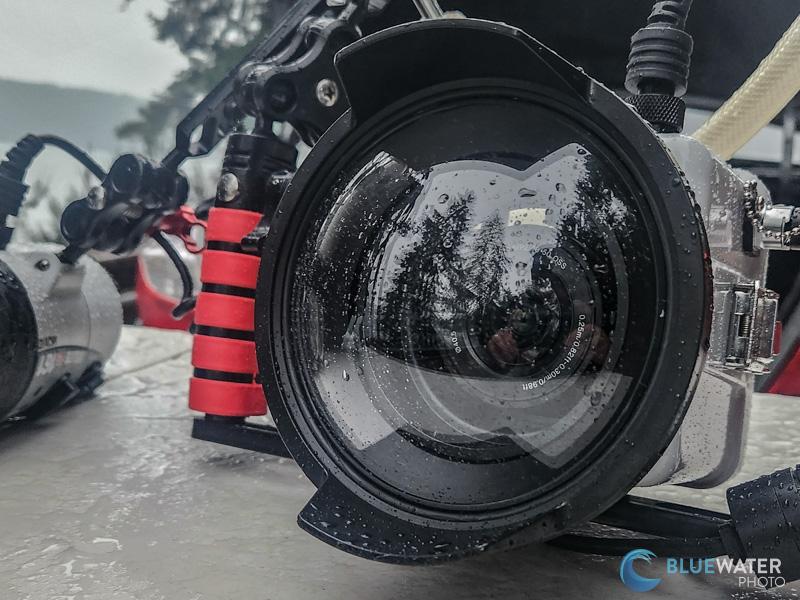
If you would like assistance with configuring a housing for a Sony A6700, kindly contact the helpful and amiable staff at Bluewater Photo. Check out our Sony guide for the Sony A6700 underwater housing as well!
We used an Ikelite Sony A6700 underwater housing for our photos for this review. We used the Sony PZ 16-50mm kit lens for wide angle and the Sony 90mm macro lens with the camera. As a DLM housing, Ikelite's a6700 is incredibly small—nearly as small as their compact camera housings. The port on my setup was nearly larger than the housing body itself, as you can see in the above photo. Furthermore, when using the 16–50mm kit lens for photography, I didn't need to utilize any extensions. The 6 inch port was a perfect fit and provided a great wide angle setup.
The A6700 housing really shines because of a few unique features. Firstly, it comes with a vacuum valve, which creates a vacuum inside of the housing, giving you a clear indication if there is a problems with the o-ring seals in the housing and whether there will be any problems when underwater. Secondly, Ikelite's strobe comes with a very accurate TTL. This takes the worry away from having to constantly change settings on the strobe, as the strobe will produce the correct amount of power output when taking photos. The clear rear of the housing and well-labeled buttons make it a breeze to see what's happening when operating the camera.
Recommended Underwater Lenses
Macro
- Sony FE 90mm f/2.8 Macro G OSS Lens (SEL90M28G): This lens offers 1:1 magnification and is the go-to macro lens for Sony shooters.
A hermit crab photographed with the Sony 90mm macro lens and the Sony a6700 camera. This lens is our favorite lens for underwater macro photography with the Sony a6700. f/16, 1/160, ISO 250.
- Sony 50mm f/2.8 Macro Lens (SEL50M28): A great choice for all Sony APS-C sensors, offering a wider field of view for larger macro subjects and fish portraits.
- Sigma 105mm f/2.8 Macro Lens: This lens is an affordable long telephoto macro lens option with excellent image quality. This lens has more focus breathing than the Sony 90mm macro so it is not as useful for video shooters.
Standard / Mid-Range
- Sony E PZ 16-50mm f/3.5-5.6 OSS Lens (SELP1650): A compact, light kit lens with a versatile focal range for u/w photo and video on the a6700. Minimum focus distance of 25cm. We recommend pairing this lens with a wet macro or wet wide angle lens like the Bluewater +7 macro lens and the Kraken KRL-01 wide angle lens.
This photo was captured with the Sony PZ 16-50mm kit lens. f/11, ISO 1250, 1/10
- Sony Vario Tessar T* FE 24-70mm f/4 ZA OSS Lens (SEL2470Z): Higher quality, although larger mid-range zoom lens. Minimum focus distance of 40cm - best used for pool, fish portrait or behavior shots.
Wide-Angle
- Sony E 10-18mm f/4 OSS Lens (SEL1018): This is the first-choice wide-angle lens for underwater shooters with an APS-C sensor.
Fisheye
- Sony E 16mm f/2.8 plus Sony Fisheye Conversion Lens vII: This is a nice, wide fisheye setup for APS-C sensors like the a6700. The fisheye converter also works with the Sony E 20mm F2.8 lens.
Conclusions
The long awaited upgrade to the Sony APS-C line of cameras has certainly been worth the wait! The new Sony A6700 features some of the latest technology, including the newest AI Tech and processors, as well as a small upgrade to the sensor resolution.
The Sony A6700 is a true powerhouse in the realm of underwater photography. With its unparalleled image quality, precision autofocus, ample buffer memory, and stunning video capabilities, this camera allows you to unleash your creativity and capture the wonders of the deep blue. But where the camera shines the most is underwater video. The ability to film in 4K/120p or even 4K/60p is unprecedented in this line of camera. Paired with the best lenses and housed in a reliable underwater housing, the Sony A6700 is the perfect companion for any underwater adventure.

